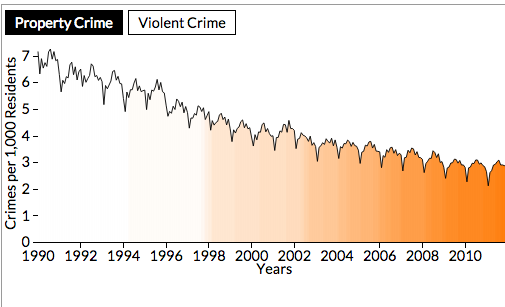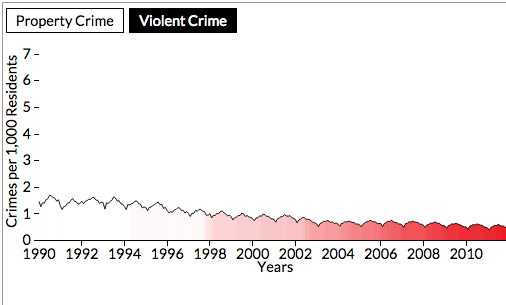More Police, Managed More Effectively, Really Can Reduce Crime

Schmidt_Alex / Shutterstock.com

Connecting state and local government leaders
When a city applies moneyball methods to policing, it lowers the rate of offenses by an average of 10 percent.
Can simply adding more police officers to the streets, or changing the ways in which they operate, actually reduce the rate of crime? A report from the Brennan Center for Justice at NYU School of Law, What Caused the Crime Decline?, provides an answer to this question. Two specific approaches to policing really can bring down crime.
First, increasing numbers of police officers can reduce crime. Increased police in the 1990s brought down crime by about 5 percent (this could range from 0 to 10 percent). Police employment increased dramatically in the 1990s, rising 28 percent. One major contributor was the 1994 Crime Bill, which provided funding for 100,000 new local officers. A body of empirical research has found that simply having more officers on the streets, even if they are not arresting or stopping anyone, can be a crime deterrent.
We also find that police techniques can be effective in reducing crime. Interestingly, the biggest impact has come from something that gets a lot less ink than controversial measures such as stop-and-frisk or the use of military equipment.
Credit the digital revolution. During the 1990s, police forces started using computers to target their efforts. The technique goes by the name CompStat. Part management tool, part geographical data-driven analysis, CompStat was developed in the 1980s to combat subway crime in New York City. Originally, it was no more complex than sticking pins into a subway map on the wall, looking for patterns. But it worked. Police commissioner Bill Bratton then implemented it full-scale into the NYPD in 1994. It then spread, in some form, to many big cities around the country.
We analyzed crime data from the 50 largest cities. Forty-one currently use some form of CompStat. We find that the introduction of CompStat is associated with a roughly 10 percent decrease in crime (this could vary from 5 to 15 percent). In other words, crime is about 10 percent lower in a city that uses a program like CompStat than in an otherwise identical city without it. The effect holds true for violent crime, property crime, and homicide.


Crime rates, 1990-2011. Graph darkens to show more cities adopting CompStat (Brennan Center for Justice)
CompStat, of course, varies city to city. And in some places it has faced criticism. In New York, for example, it is sometimes argued that CompStat can lead to overly aggressive policing, akin to stop-and-frisk. HBO’s “The Wire” highlighted the risk of officers “juking the stats” when utilizing CompStat. But it is critical to understand that CompStat is not a proxy for any of these tactics that police use on the ground in neighborhoods. CompStat is about what happens inside police departments. The hallmarks of CompStat are its strong management and accountability techniques within a police department, as well as its reliance on data collection to identify crime patterns to then choose locations and tactics to deploy resources to break those patterns.
Adding more police officers, and adopting strong, proven management techniques, can actually reduce the rate of crime. Even their combined impact, though, accounts for only a fraction of the documented reductions. Changes in law enforcement are a key part of the larger puzzle, accelerating and reinforcing the other factors that combined to produce the historic drop in crime rates.
Inimai M. Chettiar is the director of the Justice Program at New York University Law School’s Brennan Center.
NEXT STORY: Is Open Data in Minneapolis Really Open?




